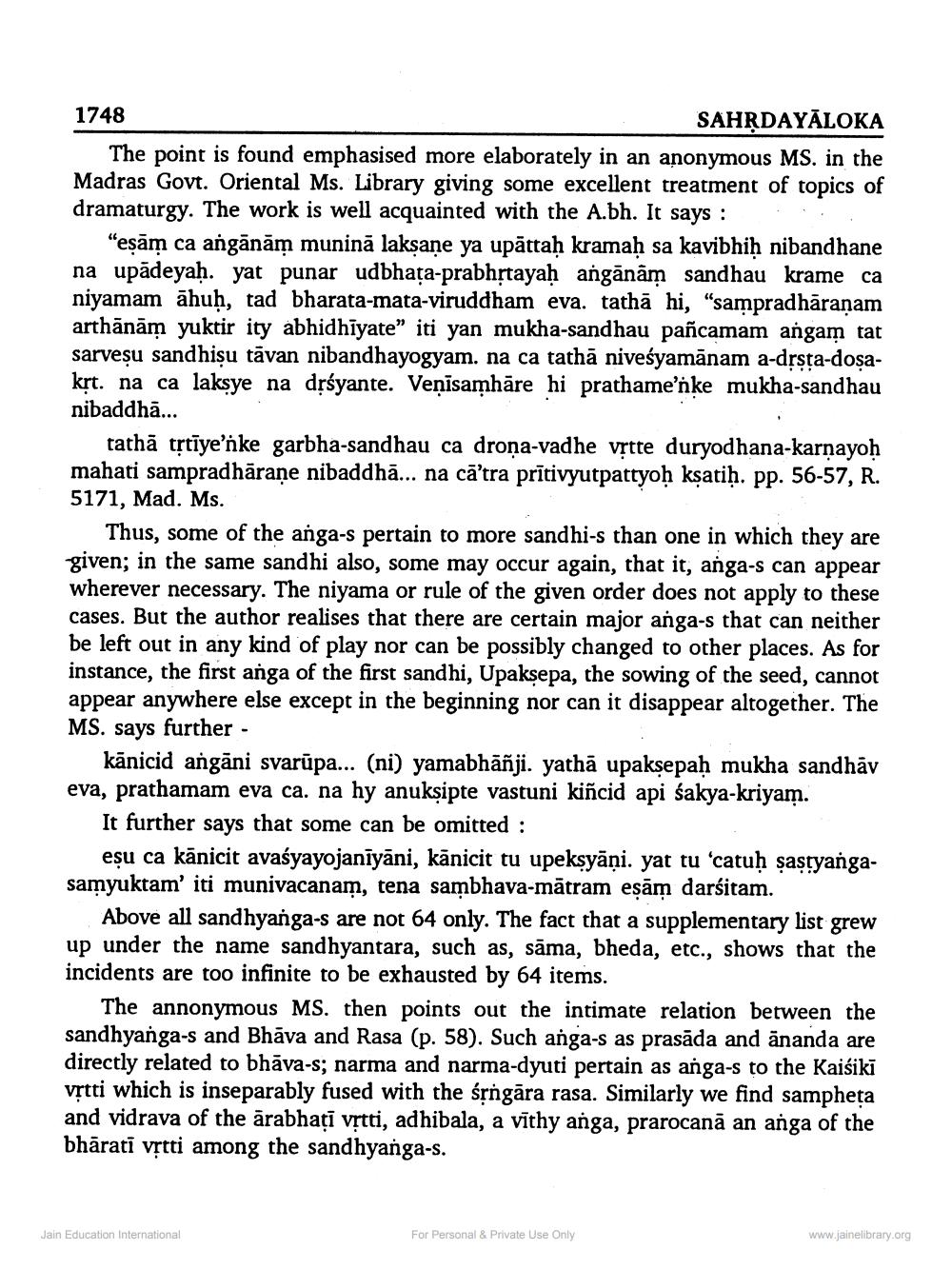________________
1748
SAHRDAYĀLOKA The point is found emphasised more elaborately in an anonymous MS. in the Madras Govt. Oriental Ms. Library giving some excellent treatment of topics of dramaturgy. The work is well acquainted with the A.bh. It says: .
"eşām ca angānām muninā laksane ya upāttaḥ kramaḥ sa kavibhiḥ nibandhane na upādeyah. yat punar udbhata-prabhrtayah angānām sandhau krame ca niyamam āhuh, tad bharata-mata-viruddham eva. tathā hi, “sampradhāranam arthānām yuktir ity abhidhiyate” iti yan mukha-sandhau pañcamam angam tat sarvesu sandhisu tāvan nibandhayogyam. na ca tathā niveśyamānam a-drsta-dosakrt. na ca laksye na drśyante. Veņīsamhāre hi prathame’nke mukha-sandhau nibaddhā...
tathā tộtīye’nke garbha-sandhau ca droņa-vadhe vștte duryodhana-karnayoh mahati sampradhāraṇe nibaddhā... na cā’tra prītivyutpattyoḥ kṣatiḥ. pp. 56-57, R. 5171, Mad. Ms.
Thus, some of the anga-s pertain to more sandhi-s than one in which they are given; in the same sandhi also, some may occur again, that it, anga-s can appear wherever necessary. The niyama or rule of the given order does not apply to these cases. But the author realises that there are certain major anga-s that can neither be left out in any kind of play nor can be possibly changed to other places. As for instance, the first anga of the first sandhi, Upaksepa, the sowing of the seed, cannot appear anywhere else except in the beginning nor can it disappear altogether. The MS. says further -
kānicid angāni svarūpa... (ni) yamabhāñji. yathā upaksepah mukha sandhāv eva, prathamam eva ca. na hy anuksipte vastuni kiñcid api śakya-kriyam.
It further says that some can be omitted :
eșu ca kānicit avaśyayojanīyāni, kānicit tu upeksyāņi. yat tu 'catuh sastyangasamyuktam' iti munivacanam, tena sambhava-mātram eşām darśitam.
Above all sandhyanga-s are not 64 only. The fact that a supplementary list grew up under the name sandhyantara, such as, sāma, bheda, etc., shows that the incidents are too infinite to be exhausted by 64 items.
The annonymous MS. then points out the intimate relation between the sandhyanga-s and Bhāva and Rasa (p. 58). Such anga-s as prasāda and ananda are directly related to bhāva-s; narma and narma-dyuti pertain as anga-s to the Kaisiki vrtti which is inseparably fused with the śrngāra rasa. Similarly we find sampheta and vidrava of the ārabhati vrtti, adhibala, a vīthy anga, prarocanā an anga of the bhārati vrtti among the sandhyanga-s.
Jain Education International
For Personal & Private Use Only
www.jainelibrary.org




